PENETRATION BITUMEN 60/70
Content Overview
DESCRIPTION OF PENETRATION BITUMEN 60/70
Bitumen 60/70, or Asphalt 60/70, is a specialized material used in road construction and waterproofing. It has the ability to withstand various temperatures and is suitable for moderate climates. It is produced through refining crude oil and does not require additional processing, making it cost-effective. The production process involves testing the penetration rate and hardness of the bitumen. Penetration Bitumen 60/70 has a low environmental impact and promotes sustainable construction practices as a recyclable material.
We manufacture the highest quality Penetration Bitumen 60/70 and export them from Iran and the UAE to other countries around the world.
- Penetration Bitumen 60/70 Iran
- Penetration Bitumen 60/70 UAE
WHAT IS BITUMEN 60/70?
Bitumen 60/70, also known as asphalt or tar in some regions, is a petroleum product that exists in both liquid and semi-solid states. It is black, highly viscous, and sticky. Bitumen is produced through the distillation of crude oil, where the lighter fractions like gasoline and diesel are removed. What remains is a heavy component rich in bitumen.
The name “Bitumen 60-70” refers to the specific physical characteristics of this type of bitumen. This grade is determined by measuring the depth (in tenths of a millimeter or penetration units) to which a standard needle will penetrate under specified conditions into a bitumen sample. Thus, a Bitumen 60.70 grade means that its penetration value is in the range 60 to 70 at standard test conditions which makes it a medium hardness bitumen.
Bitumen 60/70 is commonly used in the construction and paving industry due to its excellent binding properties, water resistance, and durability. It serves as the “glue” in asphalt concrete, binding together aggregates to form a cohesive mixture. It is also used as a waterproofing agent in roofing and other building applications due to its resistance to water.
BITUMEN 60/70 HISTORY
Sumerians, Assyrians, and many other ancient civilizations made substantial use of Bitumen. This substance was employed as an anti-humidity compound, to preserve wood, and for a variety of other applications, including embalming, sculpting, and decorating. In addition, Bitumen found in natural beds and baked bricks have been utilized as mastic in the building of temples, bridge foundations, streets, and homes.
In 1712 A.D., natural Bitumen stones were found in France, marking the birth of the current Bitumen business. Historically, bituminous materials were simply deposited in lumps on the surface of local roads and left to be progressively worn down and compacted by traffic. This approach was highly effective, and in a short amount of time, advancements in this sector were developed, such as powdering and heating the material before to usage. The asphalts were then compacted and hardened using a hot iron and a hammer. This substance, also known as Compressed Rock Asphalt, was used with great success on the streets of Europe, which have since spread worldwide.
BITUMEN 60/70 OTHER NAMES
Bitumen 60/70, due to its global usage and different applications, is known by various other names across different regions and industries. Here are some of the most common alternative names for Bitumen 60/70:
Asphalt: In North America, Bitumen 60/70 is often referred to as ‘asphalt,’ particularly when it is used in road construction or roofing applications.
Asphalt Cement or Asphaltic Cement: This term is often used when referring to the binding agent in asphalt concrete.
Tar: Although technically different from bitumen (tar is derived from coal, not petroleum), the term ‘tar’ is sometimes used colloquially to refer to Bitumen 60/70.
Mineral Pitch: This term is less common, but it may be used to refer to natural deposits of bitumen.
Bitumen Asphalt: This name emphasizes the product’s main application in the production of asphalt for paving and roofing.
These names can sometimes lead to confusion, as their use can vary by region and application. However, they all refer to the same base product: the sticky, black, and highly viscous liquid or semi-solid form of petroleum that is used for its adhesive and waterproofing properties.
BITUMEN 60/70 HS CODE, CHEMICAL FORMULA AND CAS NUMBER
Bitumen, alternatively known as Asphalt or Asphalt Cement in North America, is a semi-solid or viscous liquid form of petroleum. One of the popular grades of Bitumen is the 60/70, utilized extensively in road construction for its superior binding ability, weather resistance, and durability.
HS Code and Trade
The Harmonized System (HS) Code for Bitumen 60/70 is 27132000. It is used for international trade and is a universally accepted classification system for products.
Chemical Structure
Bitumen does not have a precise chemical formula due to its complex mixture of hydrocarbons, predominantly composed of carbon, hydrogen, sulfur, and trace amounts of nitrogen, oxygen, and metals. Its specific chemical composition can vary based on the method and source of extraction.
CAS Number
The CAS (Chemical Abstracts Service) registry number for Bitumen is 8052-42-4. It is a unique numerical identifier for chemical substances.
BITUMEN 60/70 PRODUCTION PROCESS
One noteworthy distinction of Bitumen 60/70 is its minimal requirement for further processing. Originating from vacuum distillation, it’s termed as “direct run bitumen.” A pivotal advantage of this grade lies in its cost-effectiveness. Since Bitumen 60/70 doesn’t mandate any modifications, it’s more affordable compared to other asphalt types.
Delving deeper into its production, the Bitumen 60/70 creation process encompasses several stages:
- Crude Oil Distillation: At the heart of bitumen production lies the distillation of crude oil. During this phase, crude oil undergoes heating to escalated temperatures within a distillation tower. Here, its diverse components get separated according to their respective boiling points.
- Vacuum Distillation: Post the primary distillation process, the heavier residues remaining are channeled to a vacuum distillation unit. In this phase, the application of a vacuum facilitates the removal of lighter fractions, culminating in the production of a dense residual oil.
- Blending: This dense residual oil isn’t left in its raw state. Instead, it’s mixed and blended meticulously with select additives, giving birth to the Bitumen 60/70 grade. Throughout this blending procedure, the residual oil undergoes heating, and specific additives are introduced to ensure the final product possesses the desired attributes.
- Quality Control: Ensuring consistent quality is paramount. Once Bitumen 60/70 emerges from the blending process, it undergoes rigorous quality control evaluations. These tests are crucial to ascertain that the final product aligns with the stringent specifications set for its application in various domains.
Bitumen 60/70 stands as a testament to refined engineering and meticulous production processes. Its widespread application in the construction sphere is not just a result of its inherent properties but also its affordability, making it a preferred choice for many.
BITUMEN 60/70 ADVANTAGES AND BENEFITS
Bitumen 60/70 is favored in the construction industry for several reasons:
Durability: Bitumen 60/70 is a highly durable material. It can withstand different weather conditions, making it ideal for road construction in various climates. Its excellent aging properties ensure the roads maintain their quality for a long time.
Adhesion: One of the most significant advantages of Bitumen 60/70 is its strong adhesive qualities. It’s highly effective at binding together different types of mineral aggregates, forming a strong and cohesive asphalt concrete.
Water Resistance: Bitumen 60/70 is naturally water-resistant, making it a good choice for waterproofing purposes in building and construction. It helps to keep structures dry and protected from damage caused by water infiltration.
Flexibility: Despite its strength and durability, Bitumen 60/70 is also quite flexible. This flexibility helps to absorb stress and prevent cracks in road surfaces due to changes in temperature and traffic load.
Economic: Bitumen 60/70 is a cost-effective solution for road construction and other applications. It’s also easily available, thanks to the vast global reserves of crude oil.
Recyclable: Asphalt concrete made with Bitumen 60/70 is highly recyclable. Old asphalt can be reprocessed to create new pavements, contributing to sustainability in the construction industry.
These attributes make Bitumen 60/70 a preferred choice for road construction, waterproofing, and various other applications worldwide.
BITUMEN 60/70 APPLICATIONS AND USES
The majority of penetration Bitumen 60/70 uses are in the asphalt and road construction applications. Compared to the asphalt business, the applications of Bitumen 60/70 in the roofing, sealing, and insulating industries are restricted. Bitumen 60-70 is also utilized as a key ingredient in the production of asphalt, emulsion Bitumen, cutback Bitumen, and modified Bitumen.
Another use for Bitumen 60/70 is the manufacturing of polymer modified Bitumen. In the creation of PMBs, specific polymers are added to Bitumen 60/70 in order to increase its qualities, such as elasticity, brittleness, and softening, which are vital to the improved performance of asphalt mixtures.
Typical applications include:
- Road construction
- Industrial use
- Insulation and Bitumen waterproofing
- Electrical insulation
Bitumen 60/70 in Road Construction:
Penetration Bitumen Grade 60/70 is relatively hard. As a result, this grade of penetration Bitumen can withstand temperature changes between -22 and +76 degrees Celsius. It is frequently utilized in road building and is perfect for road engineers in Asia and Southeast Africa. The most popular grade of penetration Bitumen for road building is 60/70. Paving-grade Bitumen works in a wide range of temperatures. This is not the only reason Bitumen 60/70 is popular internationally. Bitumen 60/70 and aggregates are mixed to make hot mix asphalt for road paving. For extensively used roads, use this grade of bitumen. Bitumen 60/70 is popular in Asian and African countries since it’s affordable and high-quality.
Bitumen 60/70 in Roofing Industry:
Between 10 and 15 percent of the market share for bitumen is used by roofing products. The roofing sector of the bitumen market is composed of residential steep-slope shingles and commercially modified waterproof membranes.
Bitumen 60/70 in Waterproofing Industry:
Effective waterproofing solutions that are readily accessible to roofers and construction workers in general have been developed thanks to bitumen 60/70 on the one hand and technology on the other. Today, the petro naft firm provides one of the broadest selections of waterproofing goods that are currently available on the market. This selection includes customized solutions that are tailored to the requirements of individual customers.
BITUMEN 60/70 MAINTENANCE
Proper maintenance of Bitumen 60/70 is critical to extend its service life and ensure its efficacy for the intended applications, primarily in paving and road construction. Here are some key steps and guidelines:
1. Storage: Bitumen 60/70 should be stored in a vertical tank with a heating system. It is recommended to maintain a temperature between 150°C and 180°C to prevent hardening and to keep it in a usable state. Storage tanks should also be insulated to prevent heat loss.
2. Handling: Bitumen should be handled with care during transportation to avoid contamination. It should be pumped at the recommended temperature to prevent it from hardening or getting damaged. Bitumen should not be overheated as it may cause loss of volatiles leading to a change in the properties of bitumen.
3. Regular Checks: Regular quality checks should be conducted on Bitumen 60/70. These checks involve a thorough inspection to ensure that the product still meets the specifications, including penetration and softening points.
4. Proper Cleaning: Tanks, pumps, and pipes used for storing and transporting bitumen should be cleaned regularly. Any residues left behind can harden and affect the quality of the bitumen.
5. Usage: Use Bitumen 60/70 promptly after purchase. This helps to avoid the risks associated with long-term storage, including contamination and changes in physical properties.
Following these guidelines ensures the quality and longevity of Bitumen 60/70, allowing it to continue being a reliable material for road construction and other related projects. However, these are general recommendations, and specific guidelines may vary based on local regulations and specific project requirements.
BITUMEN 60/70 DURABILITY
The durability of Bitumen 60/70, a widely used binder in road construction, is pivotal to the performance and lifespan of the pavements. Several factors contribute to its durability:
1. Oxidative Aging: Bitumen 60/70 experiences aging as it’s exposed to oxygen, heat, and UV radiation, leading to hardening over time. However, the air blowing process during production introduces a level of oxidation that enhances the bitumen’s durability, making it more resistant to further oxidative aging.
2. Temperature Resistance: Bitumen 60/70 is designed to withstand a wide range of temperatures. Its high softening point prevents it from becoming overly soft or fluid under high temperatures, while its penetrative characteristics prevent it from becoming overly brittle in cold temperatures. This balance ensures the bitumen remains functional across varying climates.
3. Water Resistance: Bitumen is inherently water-resistant. This characteristic ensures that Bitumen 60/70 maintains its structural integrity when exposed to moisture, protecting the underlying road materials from water damage and prolonging the pavement’s lifespan.
4. Adhesive Properties: The bitumen 60/70 has strong adhesive properties, which help it to bind with aggregate effectively. This creates a resilient mixture that resists disintegration under traffic and weather loads, contributing to the pavement’s durability.
5. Resistance to Fatigue: The viscoelastic properties of Bitumen 60/70 enable it to absorb and distribute stresses caused by vehicular loads, reducing the risk of fatigue cracking and increasing the pavement’s lifespan.
It’s essential to note that the durability of Bitumen 60/70 can also be influenced by other factors, including the quality of aggregate used, the pavement design, the quality of construction, and maintenance practices. Thus, using the product correctly and following best practices in pavement construction and maintenance are crucial to maximizing the lifespan of Bitumen 60/70 in road applications.
BITUMEN 60/70 INSTALLATION
Bitumen 60/70 is used extensively in road construction due to its exceptional binding properties and resistance to varying weather conditions. Here’s a simplified breakdown of the installation process.
1. Site Preparation: The first step in installing bitumen is preparing the site. This involves removing any vegetation and debris, leveling the ground, and compacting the soil to create a firm base.
2. Base Layer Installation: A base layer of aggregate is spread over the compacted soil and further compacted to provide a stable base for the asphalt.
3. Bitumen Heating: Bitumen 60/70 needs to be heated to approximately 150-180°C to achieve a liquid state that can be mixed with aggregate. The exact temperature depends on the specific product and should be carefully controlled to prevent overheating or underheating, which could affect the quality and performance of the asphalt.
4. Bitumen and Aggregate Mixing: The heated bitumen is then mixed with hot aggregate in an asphalt plant. The aggregate is usually heated to a similar temperature as the bitumen. The mixing process ensures that every particle of aggregate is coated with bitumen.
5. Asphalt Transportation: The hot mix asphalt is transported from the plant to the construction site in insulated trucks to maintain its temperature.
6. Asphalt Laying: The hot asphalt is spread over the prepared base using an asphalt paver. The thickness of the asphalt layer will depend on the design requirements of the road.
7. Compaction: Once the asphalt has been laid, it is compacted using a roller. This ensures the asphalt is well-bonded to the base and any voids within the asphalt layer are minimized.
8. Cooling and Curing: The compacted asphalt is allowed to cool and harden before it can be opened for traffic.
This is a generalized installation process and it might differ based on the specifics of the project, local regulations, and site conditions. Always follow the guidance of professionals or experts in the field to ensure the best outcomes.
BITUMEN 60/70 PACKING
Methods of Bitumen 60/70 packing:
1- New Steel Drum 180kg:
There are 110 Drums without pallets and 80 Drums with pallets in each 20-foot container.
There are 150 drums without pallets and 137 drums on pallets in each 40-foot container.
2- Poly bag packaging:
Poly bag is a revolutionary and ecologically friendly method for packaging various grades of bitumen, allowing end users to carry and use the product with more ease. The characteristics of the double-layer polyethylene coated film that enhance the quality of the Bitumen dissolved in Bitumen during the melting process.
Poly bag advantages for end users:
- Reduce cost of packaging.
- Significant decrease of waste due by product heating during container handling and Bitumen transfer, as well as cost savings compared to conventional packaging.
- Optimal use of cargo space and reduced moving costs compared to barrel Bitumen shipping.
- Due to the decreased danger of poly bag packaging compared to alternative packaging techniques for customers, insurance costs may be reduced.
- lowering product heating expenses.
- Elimination of costs of recycling and disposal of barrels and other waste caused by Bitumen transportation.
- Possibility of utilizing film coating during product heating as a permitted ingredient that may contribute to improving Bitumen quality.
- Possibility of simple transport to the site of ultimate consumption owing to packaging’s low weight and flexibility.
- Creating the potential of capillary distribution for construction material wholesalers.
3- Bulk:
The materials may also be transported in bulk straight to the client’s storage facility; Bitumen bulk vessels vary in size and capacity. The PetroNaft Co. provides all grades of Bitumen in Bulk based on the customer’s specific need. The most influential aspects of Bulk Bitumen Carrier Rates are Service Charges, Discharge Port, Season of Loading, Discharge Terminal Fees, Destination Bunker Price, and Vessel Capacity.
Bulk sales may be made through truck or bulk ship. Bulk Bitumen cargoes may be delivered by tankers ranging in size from 1,000 to 8,000 metric tons; however, the majority of tanker deliveries will be made directly into a tank terminal.
Bulk ship: we may transport the tanks directly to the target ports or via flexi tank. Bitumen in bulk is accessible for road and water transport.
4- Jumbo bag:
The production of Bitumen jumbo bags with capacities ranging from 300 kg to 2 tons is depending on client demand and the carrying capacity of containers.
Special care must be taken while shipping or storing things to ensure that they reach their destination without incident. Transporting and storing a product in jumbo bags is one of the most effective ways to maintain its quality until it is used.
Since the 1940s, these bags have been utilized, however recent ones have evolved. Among the significant transportation applications for these bags, the following might be mentioned:
- Powdered goods.
- Food and drink.
- Transporting chemicals.
- Transporting agricultural goods.
- Transporting building materials.
- Transporting minerals and metal powders.
- Transporting plastics.
- Transportation of wood and paper.
Types of giant bags depending on the sewing technique
According to the kind of stitching, jumbo bags are classified as follows:
- Four panel big bag.
- Extra-large bag with cap handle.
- Giant static-electricity-resistant bag.
- Jumbo bag U panel.
- Giant bag with breathable fabric.
- Jumbo bags for hygiene or food products.
- Woven or round large bag.
- Jumbo Bag with stabilization device or Jumbo Bag Q.
BITUMEN 60/70 PROPERTIES
Bitumen 60/70, widely utilized in paving and roofing applications, has a unique set of properties making it suitable for such purposes. Here are some of its significant characteristics:
1. Penetration: The ’60/70′ in its name refers to the penetration value of the bitumen, measured in deci-millimeters (dmm). This value indicates the hardness of the bitumen, with Bitumen 60/70 typically having a penetration between 60 and 70 at 25°C.
2. Softening Point: Bitumen 60/70 has a high softening point (around 49-56°C), meaning it can withstand relatively high temperatures before losing its structural integrity.
3. Ductility: This bitumen is known for its high ductility, which means it can be stretched to a considerable length before breaking. This property enables it to effectively absorb the stresses of traffic loads without cracking.
4. Specific Gravity: The specific gravity of Bitumen 60/70 is typically around 1.01-1.06 at 27°C. This property impacts the weight of the asphalt mix and its performance characteristics.
5. Viscosity: The viscosity of this bitumen at 60°C impacts its pumping, mixing, and compaction during road construction. It is typically high enough to ensure a stable asphalt mix but low enough to facilitate these processes.
6. Solubility: Bitumen 60/70 is soluble in Carbon Disulphide (CS2), making it possible to use this solvent for various tests and applications.
7. Adhesion: Bitumen 60/70 has strong adhesive properties, allowing it to bond effectively with aggregate to create a resilient asphalt mix.
8. Durability: With good resistance to weathering, water, and high temperatures, Bitumen 60/70 provides a durable and long-lasting pavement surface.
These properties can be influenced by factors such as the crude oil source, production methods, and aging. Therefore, Bitumen 60/70 should always be sourced from reputable suppliers and used following best practices to ensure optimal performance.
BITUMEN 60/70 PERFORMANCE
Bitumen 60/70 is a high-performing grade of bitumen commonly used in road construction and other applications due to its excellent physical and chemical properties. Its performance is characterized by the following aspects:
1. Versatility: Due to its balanced softening point and penetration, Bitumen 60/70 is versatile and can be used in various climates, from hot to cold temperatures. Its adaptability makes it a preferred choice for numerous applications beyond road construction, such as water resistance in building constructions.
2. Durability: Bitumen 60/70 demonstrates excellent durability. Its high resistance to wear and tear and weathering ensures the longevity of structures where it is used, especially in road construction.
3. Adhesion: One of the superior qualities of Bitumen 60/70 is its excellent adhesion. It binds well with different types of aggregates, resulting in a stable and durable asphalt mix that resists stripping even in the presence of water.
4. Temperature Stability: Bitumen 60/70 can withstand a wide range of temperatures. It does not become overly soft in hot weather, preventing rutting, and it doesn’t become overly hard or brittle in cold temperatures, preventing cracking.
5. Resistance to Fatigue: The viscoelastic nature of Bitumen 60/70 makes it resistant to fatigue. It can absorb and distribute traffic-induced stresses, reducing the likelihood of structural failures and cracks.
6. Waterproofing: Bitumen 60/70’s water-resistant nature ensures effective waterproofing in various applications. It creates an impermeable layer that shields construction materials from water ingress, thus preventing damage and increasing the structure’s lifespan.
Overall, when Bitumen 60/70 is correctly installed and properly maintained, it performs exceptionally well, contributing to the strength, durability, and longevity of structures.
BITUMEN 60/70 SPECIFICATIONS
These are the specifications for Bitumen 60/70:
1-Penetration degree of Bitumen 60/70:
Its degree of penetration is determined in the laboratory to evaluate its hardness. In this procedure, a 100-gram needle is inserted in 5 seconds at 25 degrees Celsius, and the depth of penetration is measured to the nearest tenth of a millimeter. The lower the penetration rate, the more robust the Bitumen.
2-Flash point of Bitumen 60/70:
The temperature at which it ignites the produced gases by reaching this temperature is known as the ignition degree, and the maximum quantity that can be heated is restricted by its ignition temperature.
3-Viscosity of Bitumen 60/70:
The more solid its properties, the less fluid it is. Notably, the conductivity of this material decreases at increasing temperatures, and this attribute is evaluated in the laboratory using the Sea bolt Fiorel gadget.
4-Ductility of Bitumen 60/70:
Its malleability is defined as the increase in length in the laboratory when it is stretched with a cross-sectional area of 1 cm2 at a speed of 5 cm/min prior to breaking.
5-Weight loss of Bitumen 60/70:
Weight loss in Bitumen is due to the evaporation of petroleum chemicals and oils contained within it. This quality is also one of its major qualities, allowing it to be measured in the oven at 163 degrees Celsius for five hours at this temperature.
6- Softening Point of Bitumen 60/70:
This is the temperature at which Bitumen transforms from solid to liquid. The greater the degree of softness, the less sensitive it is to temperature, and the majority of these materials have a degree of softness between 50 and 70 degrees Celsius.
7-Degree of Solubility of Bitumen 60/70:
The degree of purity is the number of impurities remaining after dissolving a sample in carbon sulfur or carbon tetrachloride solvent.
Bitumen 60/70 specification table:
| Bitumen 60/70 | Test method | Unit | Specification |
| Specific gravity @ 25°C | ASTM D70 | Kg/cm3 | 1.01/1.06 |
| Penetration @ 25°C | ASTM D5 | mm/10 | 60/70 |
| Softening point °C | ASTM D36 | °C | 49/56 |
| Ductility @25 °C | ASTM D113 | cm | 100 min |
| Loss on heating(wt.) % | ASTM D6 | wt. % | 0.2 max |
| Drop in penetration after heating % | ASTM D5-D6 | % | 20 max |
| Flashpoint °C | ASTM D92 | °C | 232 min |
| Solubility in Trichloroethylene | ASTM D2042 | wt. % | 99 min |
| Spot test | AASHTO T 102 | Negative |
BITUMEN 60/70 COMPOUNDS AND MATERIALS
The different compounds of Bitumen 60/70 are not well understood at this time, but the majority of these compounds, which are separated from Bitumen by different solvents, consist of asphaltene-resin materials and heavy oils, which are sometimes accompanied by a small amount of minerals and placed adjacent to one another in an oily colloidal environment. are Bitumen’s flexibility and adhesion being dependent on the resin; nevertheless, the more the asphaltene content, the harder the Bitumen is, whilst the addition of Bitumen oil softens it. By heating Bitumen, oily substances transform into resin, resins transform into asphaltene, and excessive heat transforms Bitumen into coal and water vapor.
1-Asphaltene:
Asphaltene is a brittle, insoluble, black to brown solid that is insoluble in standard heptane. Besides carbon and hydrogen, it also contains nitrogen, sulfur, and oxygen. Asphaltene is often regarded as a highly polar material that comprises complex aromatic compounds with a very high molecular weight. It has no definite melting temperature, and when heated, it first expands, then decomposes, and eventually leaves behind a great deal of carbonaceous material. Asphaltene makes up between 5 and 25 percent of Bitumen. The greater the asphaltene content in Bitumen, the harder and less permeable the Bitumen will be, as well as having a higher softening point and viscosity. This substance’s molecular weight ranges from 600 to 300,000 depending on the separation technique used.
2-Maltenes:
Maltenes are soluble in mild solvents, such as heptane. Bitumen’s maltenes are a combination of resins and oils with a molecular weight between 250 and 1300 g/mol.
3-Resins:
Resins may be dissolved in heptane. The majority of these compounds, such as asphaltene, are composed of carbon and hydrogen, with traces of oxygen, sulfur, and nitrogen. This substance is dark brown, solid and semi-solid, and highly polar. Resins are unique in that they are very sticky. Resins are anticoagulants for asphaltene, and the ratio of resin to asphaltene may be such that it imparts a sol or gel condition to the Bitumen.
4-Aromatics:
Aromatics are cyclic compounds with the lowest molecular weight and aromatic or naphthenic side chains; they are regarded as very effective asphaltene anticoagulants. This component comprises between 40 and 60 percent of the total Bitumen and is a dark brown, viscous liquid with an average molecular weight ranging from 300 to 2000. Aromatics feature nonpolar carbon chains with a preference for saturated rings and high solubility for heavy hydrocarbons.
5-Saturated compounds:
Saturated compounds consist of aliphatic hydrocarbons with straight and branched chains, alkyl naphthene, and certain alkyl aromatics. Frequently, these compounds take the form of viscous, non-polar, colorless oils. Their average molecular weight is identical to that of aromatic compounds, and their contents consist of saturated waxy and non-waxy substances. This component comprises between 5 and 20% of Bitumen.
In general, asphaltenes constitute the structural skeleton of Bitumens, resins influence the stickiness and flexibility of Bitumen, and oils influence the Bitumen’s psychological problem. Fundamentally, Bitumen’s physical properties are determined by the chemical structure, amount, and quality of hydrocarbons.
BITUMEN 60/70 DANGERS
During the manufacturing, storage, and transportation of Bitumen 60/70, its high temperature often poses the greatest risks. Among these dangers are:
- The emission of fumes from the product during heating.
- Continuous skin contact.
- The combustibility and, in certain situations, the flammability of the product.
- Contact with pipelines, tanks, or other apparatus holding molten Bitumen, hot water, or steam.
- Release of substances during manufacture, storage, distribution, usage, and transportation of the product, particularly in the case of emulsion Bitumens.
- Note that fire extinguishers must be used in the case of a fire. The use of water or CO2 capsules is perilous.
BITUMEN 60/70 FIRE POINT
An important attribute that must be taken into account in many industrial applications is the fire point of bitumen 60/70. A grade of bitumen that is often used in the building and transportation sectors is bitumen 60/70.
The temperature at which bitumen will ignite and continue to burn in the presence of a flame or spark is referred to as the bitumen 60/70 fire point. When evaluating the safety of bitumen transportation and storage, it is an important factor to consider. According to ASTM D93, the fire point of bitumen 60/70 is normally determined using a closed cup flash point tester.
Since bitumen 60/70 has a relatively high fire point of between 250 and 280 °C, handling and transporting it is generally safe. This is because bitumen is a thermoplastic substance, meaning that it needs a high temperature to reach its ignition point and does not ignite readily.
It’s important to remember that bitumen may still provide a fire danger if it comes in contact with an ignition source like a spark or open flame. Using the right containers and storage facilities, making sure there is enough ventilation, and wearing fire-resistant gear and clothes are all important safety precautions to follow while handling or storing bitumen.
BITUMEN 60/70 SAFETY TIPS
To prevent accidents and injuries while working with bitumen 60/70, it is essential to observe adequate safety precautions. These are some precautions to take:
- Use Personal Protective Equipment (PPE): While working with bitumen 60/70, wear PPE like as gloves, safety goggles, a respirator, and protective gear. This will shield you from the material and help avoid burns and other damage.
- Keep the location well-ventilated: Bitumen 60/70 may emit toxic fumes when breathed. Make sure the place where you’re working is well-ventilated and has lots of fresh air flowing.
- Bitumen 60/70 should be stored in a cold, dry, and well-ventilated environment, away from sources of heat, sparks, or open fires. Keep it away from flammable items.
- Handle with caution: Bitumen 60/70 is hot and sticky, therefore use caution to prevent burns or other damage. Handle and transport the material using the proper tools and equipment.
- Clean up spills right away: If you spill bitumen 60/70, clean it up right away using absorbent materials like sand or sawdust. Water should not be used to clean up the spill since it might cause the bitumen to spread.
- Waste disposal: In line with local rules, dispose of any waste materials created during the processing of bitumen 60/70.
Note that while dealing with any hazardous chemical, such as bitumen 60/70, safety should always come first. If you have any questions about how to handle it properly, ask a safety specialist or the manufacturer’s safety data sheet.
BITUMEN 60/70 TRANSPORTATION AND STORAGE
The transportation and storage of Bitumen 60/70 involve specific procedures to maintain its quality. It’s important to consider the method of packaging as it directly affects the handling, transportation, and storage of the product.
1. New Steel Drum 180kg:
Transportation: 110 drums without pallets or 80 drums with pallets can be transported in each 20-foot container. Alternatively, a 40-foot container can accommodate 150 drums without pallets or 137 drums with pallets. Drums should be secured during transport to prevent movement and potential damage.
Storage: The drums should be stored in a cool, dry place away from direct sunlight. The storage area should be ventilated, and the drums should be stacked horizontally and not more than three drums high to prevent them from falling.
2. Poly Bag Packaging:
Transportation: Poly bags allow for optimal use of cargo space and reduced moving costs compared to barrel bitumen shipping. They’re lightweight and flexible, facilitating easier transportation to the site of consumption.
Storage: Poly bags should be stored in a dry, cool location away from direct sunlight. Care should be taken not to puncture the bags, and they should not be stacked too high to avoid them from collapsing.
3. Bulk:
Transportation: Bitumen can be transported directly to the client’s storage facility. The rates for bulk bitumen carriers depend on various factors, including service charges, discharge port, loading season, discharge terminal fees, destination bunker price, and vessel capacity. Bulk sales can be made through truck or bulk ship.
Storage: Bulk bitumen should be stored in suitable storage tanks with heating systems to keep the bitumen in liquid form. The storage tanks should be cleaned regularly to avoid contamination.
4. Jumbo Bag:
Transportation: Jumbo bags are highly versatile and can be used to transport bitumen in capacities ranging from 300 kg to 2 tons. They’re designed to handle the heavy weight of bitumen, and their size can be adapted according to the carrying capacity of containers.
Storage: Jumbo bags should be stored in a dry, well-ventilated area. Care should be taken to avoid sharp objects that might puncture the bags. The bags should not be stacked too high to prevent them from collapsing.
It’s crucial to ensure that Bitumen 60/70 is transported and stored correctly to maintain its quality and performance. Any disregard for the appropriate procedures could lead to the degradation of the product, causing issues during application.
BITUMEN 60/70 PRICE
Understanding Iran’s Bitumen 60/70 Price: A Must-Read Comprehensive Guide to Improve Your Knowledge
Current Prices of Iranian Bitumen 60/70
Understanding Global Asphalt Prices: A Must-Read Comprehensive Guide for Better Comprehension
International Bitumen 60/70 Cost
Stay updated with the latest prices of our wide range of Petronaft bitumen types, including the popular bitumen 60/70. Explore the information on this page for weekly price updates and make informed decisions for your projects:
Current Global Prices of Bitumen
You may easily buy bitumen 60/70 from the Petronaft Company; just utilize our contact channels; we manufacture and export bitumen 60/70 in Iran, as well as from our Dubai warehouse. Our professionals will be with you during this procedure.
Explore related articles on this product via the tag link below:
Frequently Asked Questions About BITUMEN 60/70
To download the specification PDF of Bitumen 60/70, you can click the "INFORMATION REQUEST AND PRODUCT SAMPLE FOR PENETRATION BITUMEN 60/70" button below the product photos. We will send you the necessary information as soon as possible, or use the "ANY QUESTION?" form on the bottom right of the page.
To download the MSDS of Bitumen 60/70, you can click the "INFORMATION REQUEST AND PRODUCT SAMPLE FOR PENETRATION BITUMEN 60/70" button below the product photos. We will send you the necessary information as soon as possible, or use the "ANY QUESTION?" form on the bottom right of the page.
To download the TDS of Bitumen 60/70, you can click the "INFORMATION REQUEST AND PRODUCT SAMPLE FOR PENETRATION BITUMEN 60/70" button below the product photos. We will send you the necessary information as soon as possible, or use the "ANY QUESTION?" form on the bottom right of the page.

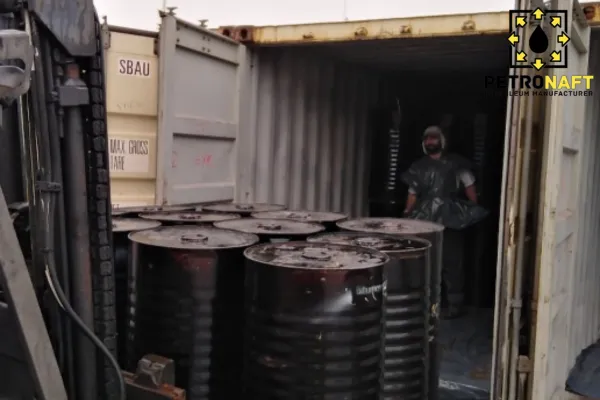
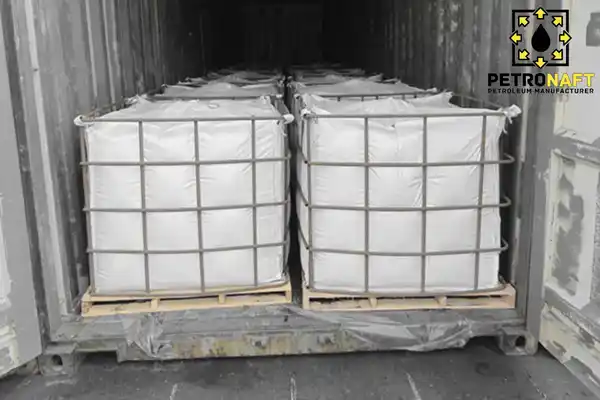
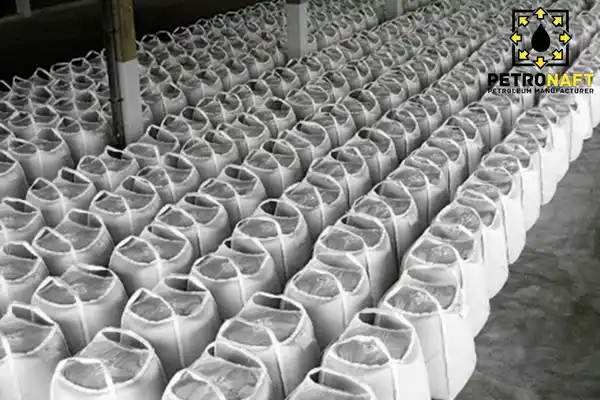
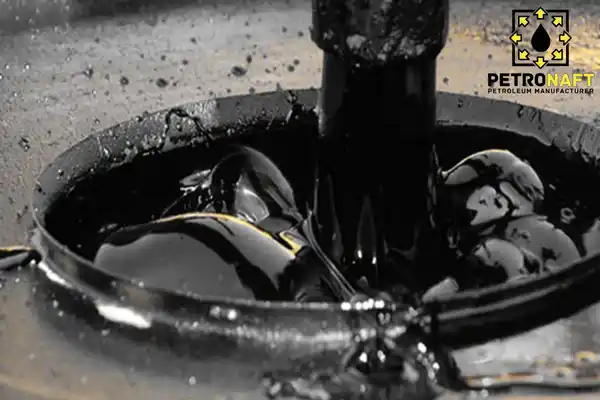
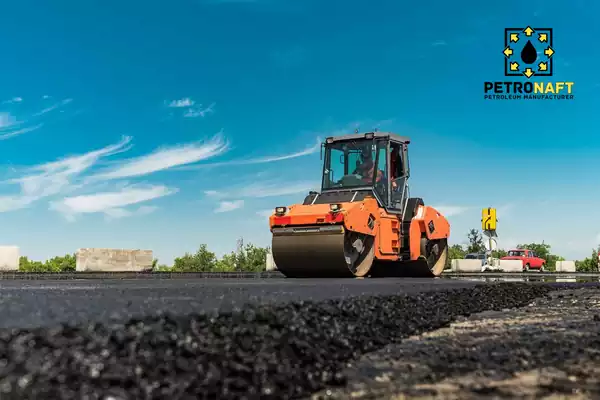
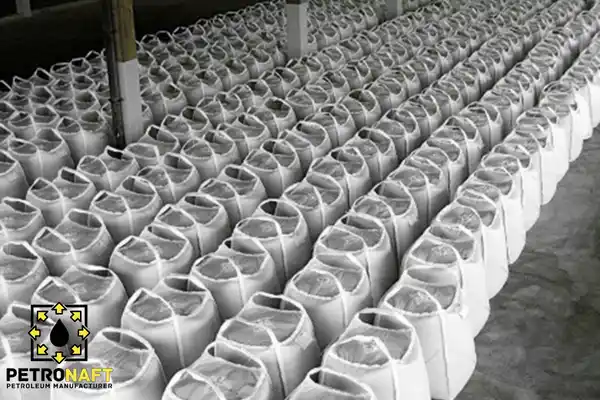

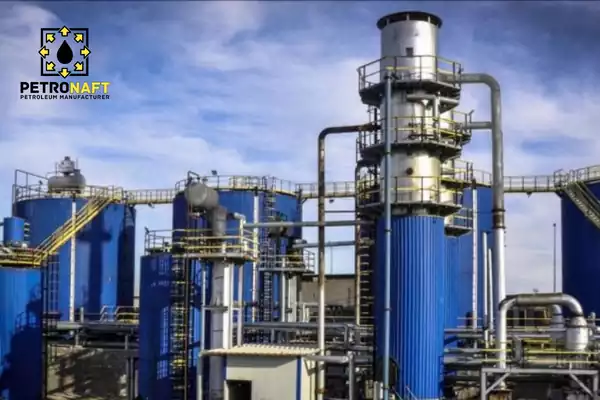

Thank you ever so for you blog article.Really looking forward to read more. Keep writing.
Thank you for your encouraging words! We aim to cover everything about Penetration Bitumen 60/70—its properties, applications in road construction, and more. We appreciate your interest and look forward to providing more in-depth articles. If you have any specific queries or project needs, feel free to let us know.
Hi there i am kavin, its my first occasion to commenting anywhere, when i read this paragraph ithought i could also make comment due to this brilliant piece of writing.
Thank you for your comment! We’re glad you found it helpful.
hi fellow web master! I really enjoy your website! I liked the creativity of your sidebar.
Hi Dorothy! We’re glad you enjoy our website and its design. Feel free to explore more of our content on bitumen and other petroleum-based products. If you ever need assistance or want to inquire about penetration bitumen 60/70, you can contact us at [email protected].
After study some of the websites with your web site now, we truly as if your technique for blogging. I bookmarked it to my bookmark site list and will be checking back soon. Pls look into my website also and told me what you consider.
Hi Asa, thanks for your feedback! We’re glad you like our approach to blogging. Feel free to share your thoughts, and if you have any questions about penetration bitumen 60/70, we’re here to help!
Hello my friend! I want to say that this article is awesome, nice written and come with almost all significant infos I¦d like to see extra posts like this
Hi Archie,
Thank you for your encouraging words! We’re glad you enjoyed the article. We will definitely continue to provide detailed and informative posts on topics like Penetration Bitumen 60/70 and more. If there’s anything specific you’d like to learn more about, feel free to let us know.
Dear sir or madam, I’m curious, can we use Bitumen 60/70 in cold weather conditions?
Thank you for your good question! When it comes to using Bitumen 60/70 in cold weather, it’s important to understand that temperature can significantly impact the performance of bitumen. Bitumen 60/70 is a common type of bitumen used in road construction due to its balance of flexibility and durability.
In cold weather, bitumen naturally tends to become more brittle. However, the specific formulation of Bitumen 60/70 allows it to retain a degree of flexibility even in colder temperatures. This is a vital feature for road surfaces, which must be able to withstand varying weather conditions without cracking.
Nonetheless, there are practical considerations when working with Bitumen 60/70 in cold weather. For instance, the colder the weather, the more quickly bitumen can cool and harden after being applied, which can make it more difficult to work with. Therefore, additional care and planning are needed when working with Bitumen 60/70 during cold weather to ensure the best results.
Good day,
We are from the company Paveway Construction and we have been purchasing your Bitumen 60/70 for our various projects. We’re very pleased with the quality and your service. Nonetheless, we have a technical query for our records and future planning. Could you clarify the shelf life of Bitumen 60/70 when stored under optimal conditions?
Hello Dear Jane,
Thank you for your good question and your continued support of our products. Bitumen 60/70, like other types of bitumen, doesn’t have a specific expiration date. However, it’s important to note that the properties of bitumen can change over time, particularly if it is not stored correctly.
In optimal storage conditions, where the bitumen is kept in a well-sealed, moisture-free container and stored at a suitable temperature below 50°C, it can maintain its quality for an extended period. To maintain its optimal performance, we recommend using the product within one to two years of purchase.
We hope this helps. If you have any other questions or require further information, please don’t hesitate to contact us.
Hi,
Thanks for the good information you have provided. We are one of your customers, and we thank you for your good service. Please answer my question.
How can I maximize the lifespan of bitumen 60/70?
Thank you for your good question. Maximizing the lifespan of bitumen 60/70 can be achieved through proper maintenance and application techniques. Here are some tips to help you:
Surface Preparation: Ensure that the surface to be coated with bitumen 60/70 is clean, dry, and free from any debris or loose particles. Proper surface preparation promotes better adhesion and longer durability.
Temperature Considerations: Pay attention to temperature conditions during the application. Bitumen 60/70 should be applied within the recommended temperature range to achieve optimal results. Extreme temperatures can affect the quality and performance of the material.
Thickness and Layering: Apply the appropriate thickness of bitumen 60/70 as per the project requirements. Multiple layers may be required for thicker applications. It’s important to follow the recommended specifications and guidelines for achieving the desired results.
Regular Inspections: Periodically inspect the bitumen-coated surface for any signs of damage, such as cracks, potholes, or deterioration. Promptly address any issues to prevent further damage and extend the lifespan of the bitumen coating.
Routine Maintenance: Implement a regular maintenance schedule, which may include cleaning the surface, filling cracks or potholes, and resealing as needed. This proactive approach helps to prevent significant damage and ensures the longevity of the bitumen 60/70 application.
By following these guidelines and considering proper maintenance, you can maximize the lifespan of your bitumen 60/70 application and enjoy its benefits for an extended period.
If you have any further questions or need more information, please feel free to ask. We are here to assist you.
Hi Touba
what happens if bitumen 60/70 is contaminated by water while hot during transport? will the penetration or other properties change? thanks
Hi there,
If bitumen is contaminated with water during transport, especially when hot, it can indeed affect its quality and properties. Water can cause a reaction known as ‘foaming’ which may alter the penetration levels, viscosity, and softening point of the bitumen, potentially leading to a less durable and reliable end product.
To ensure the bitumen retains its desired properties, it is crucial to maintain a moisture-free environment during transport. This means using tanks and containers that are properly sealed and insulated against moisture intrusion. Furthermore, transportation should follow a route that minimizes the risk of temperature fluctuations and exposure to water.
Do you mind if I quote a few of your posts as long as I provide credit and sources back to your webpage?
My blog site is in the exact same niche as yours and my visitors would genuinely benefit from a lot of the information you present here.
Please let me know if this alright with you. Cheers!
Thank you for your interest in quoting content from our website. We appreciate your efforts to give credit and link back to our page. We allow quotes as long as they are used in a reasonable manner and provide proper attribution. Please make sure to only use quotes that are relevant to your content and add value to your readers. Thank you for asking for permission and feel free to use our content within these guidelines.
how many types of bitumen are there?
You can refer to the link below for information on this issue:
https://www.petronaftco.com/bitumen-and-asphalt/
Please advise about bitumen 60/70 density
The bitumen 60/70 density can vary depending on its temperature, but typically ranges from 1.01 to 1.05 grams per cubic centimeter (g/cm³). At room temperature (approximately 25°C or 77°F), the density of bitumen 60/70 is usually around 1.04 g/cm³.
It’s important to note that the density of bitumen can vary depending on the grade, temperature, and other factors, so specific measurements may differ slightly.
Every weekend i used to pay a quick visit this site, for the reason that i want enjoyment, as this site contains genuinely nice material top.
Thank you for your kind words! We’re glad to hear that you enjoy visiting our site and finding useful information about our petroleum products. Our team works hard to provide high-quality content and excellent customer service to all of our visitors. Please feel free to reach out if you have any questions or need assistance with any of our products.
How can I know the price of bitumen 60/70?
Thank you for your question, to know the exact price, you need to specify more information, including the desired destination, quantity and packaging, please contact us via the following email or to know the FOB price, visit our bitumen price announcement page.
[email protected]
https://www.petronaftco.com/bitumen-price/
Exactly where are your contact details though?
You can find our contact details in the following link:
https://www.petronaftco.com/contact/
I have been exploring for a bit for any high quality articles
or weblog posts on this kind of house . Exploring in Yahoo I ultimately stumbled upon this website. Studying this info So i am satisfied to exhibit that I have a very excellent uncanny feeling I discovered exactly what I needed.
I most definitely will make certain to do not forget this site and provides it a glance on a continuing basis.
Thank you for taking the time to explore our website and leaving a comment. We appreciate your kind words and are glad to hear that you found the information you were looking for.
At our website, we strive to provide high-quality articles and weblog posts that are informative and useful to our visitors. Our team works hard to keep the content up-to-date and relevant to the latest trends in the industry.
We hope that you will continue to visit our site and explore our range of petroleum products. If you have any further questions or comments, please feel free to reach out to us, and we will be happy to assist you.
At this moment I am ready to do my breakfast, afterward having my breakfast coming yet again to read further news.
Thank you for your comment! We are glad to hear that you are enjoying our website. We strive to provide valuable information about our petroleum products and their benefits. If you have any specific questions or concerns about our products, please don’t hesitate to reach out to our customer support team. We appreciate your interest in our website and hope that you continue to find it helpful.
Where can I find out the updated price of bitumen 60/70?
The price of bitumen 60/70 and other common bitumen grades is updated weekly on the following page:
https://www.petronaftco.com/bitumen-price/
I do not know if it’s just me or if perhaps everyone else encountering issues with your blog. It looks like some of the text in your posts are running off the screen.
Can somebody else please comment and let me know if this is happening to them as well? This might be a problem with my browser because I’ve had this happen previously.
Many thanks
Thank you for bringing this to our attention. We apologize for any inconvenience caused by the formatting issues you have experienced while browsing our website. We would appreciate it if you could provide us with more details, such as the browser and device you are using, so that we can investigate this matter and resolve it as soon as possible. If other users have experienced the same issue, please do let us know, as we strive to provide the best possible experience for all of our visitors. Thank you for your understanding, and we look forward to hearing back from you.
Good morning
How are you dear
We are yemen oiling service company, we need to inquiry about bitumen 60 70 price FOP price jebel Ali,
Thanks
Mr Murad
Dear Mr. Murad,
Thank you for your interest in our products. We appreciate your inquiry regarding the price of bitumen 60 70 FOB price at Jebel Ali. We would be glad to assist you in this matter.
To provide you with an accurate quote, we would require some additional information such as the quantity required, the final destination port, and any other specific requirements. Once we have this information, we can provide you with a competitive price quote.
Please feel free to contact us through our website or email with the details, and we will get back to you promptly. We look forward to hearing from you soon and hope to establish a long-term business relationship.
It is perfect time to make some plans for the future and it is time to be happy. I have read this post and if I may I desire to counsel you some attention-grabbing issues or tips.
Maybe you can write next articles relating to this article. I wish to learn even more things about it!
Thank you for your comment! I’m glad to hear that you found the post interesting and helpful. I would be happy to consider your suggestions for attention-grabbing issues or tips for future articles. Please feel free to share any specific topics you would like me to cover, and I will do my best to incorporate them into future posts. Additionally, if there are any particular areas related to the topic of this post that you would like me to delve deeper into, please let me know and I will try to address them in future articles. Thank you for reading, and I hope to continue providing useful and informative content for you.
I do not even understand how I finished up here, however I believed this put up used to be great. I do not recognise who you’re however definitely you are going to a famous blogger if you happen to aren’t already. Cheers!
Thank you for your kindness.
Good information. Lucky me I came across your website by accident.
I have saved as a favorite for later!
We are glad that we were able to provide useful information. Thank you for your comment.
Because the admin of this web page is working, no hesitation very shortly it will be renowned,due to its feature contents.
Thank you for your kind comment.
Does your blog have a contact page? I’m having trouble locating it but, I’d like to shoot you an e-mail. I’ve got some suggestions for your blog you might be interested in hearing. Either way, great site and I look forward to seeing it expand over time.
Thank you for your kind comment, our contact information page is in the link below.
https://www.petronaftco.com/contact/
Hello and greetings
Buying bitumen for the production of bituminous coating for steel in our coating factory from Petronaft was a very good experience. thank you.
Hello, I hope you had a great day.
It is our honor to work with your company, and we thank you for your kind comment.
Does bitumen wrap affect the price of 60-70 bitumen?
Thank you for your good question.
Yes, of course, packaging will affect the price, but you should also keep in mind that packaging depends on various factors. You can negotiate with our experts to choose the best and most economical option for packaging your order. I will put the direct email of the senior sales manager of the company for you below:
[email protected]
Which packing and shipping method is the cheapest?
The cheapest method is bulk shipping, but this method has many obstacles, you can contact our experts for more information.
Hello,
Good dady
We have purchased 60/70 bitumen from your company several times for the bituminous road under construction.
As a supply manager, I wanted to thank you for your professional service and high-quality bitumen.
Hello, I hope you had a great day
It is our honor to work with your company and thank you for your kind comment.
Dear manager
Can bitumen 60–70 be used for bituminous asphalt paving? By the way, thank you for the very good information on your site. We will contact you if it is approved, and we will purchase from you soon.
Esteemed colleague
One of the main applications of bitumen 60 70 is for bituminous asphalt paving, for any further information and to register a purchase order, you can contact our sales manager via the following email:
[email protected]
Hello
Is the transport done by bitutainer transport bitumen?
Hello, and thank you for your question.
Bitumen transportation depends on many factors, including the distance of transportation, type of transportation (land or sea), intended use, target price, etc. For more information and consultation with our experts through the form “ANY QUESTION,” contact us at the bottom of the page.
Please explain the difference between bitumen vs asphalt
For complete information regarding the difference between bitumen and asphalt, please click on the following phrase:
BITUMEN AND ASPHALT
Is bitumen 60-70 a type of bituminous expansion joint?
Bitumen 60-70 is also used to make bituminous expansion joint.
Hi
Can bitumen 60 70 be used for bitumen waterproofing membrane?
Hello,
Thank you for your comment, bitumen 60-70 can be used for various uses, including the production of insulation types such as “bitumen waterproofing membrane”.
Is bitumen 60/70 more suitable for hot or cold weather?
Hello,
As far as I know it’s best for temperate climates, meaning neither too hot nor too cold.
Absolutely correct, thank you for your reply.
Where is your factory for the production of bitumen 60/70 located?
It is located in Iran, but we also export from the UAE.